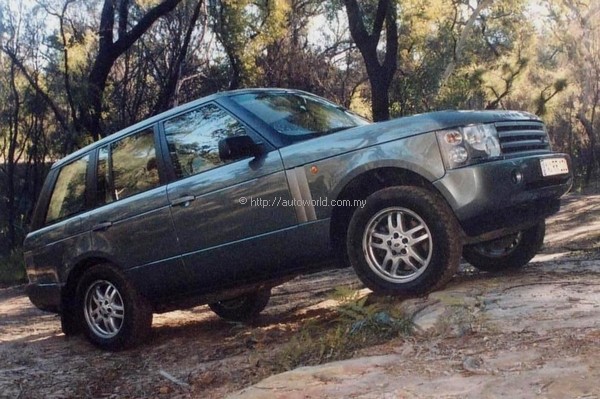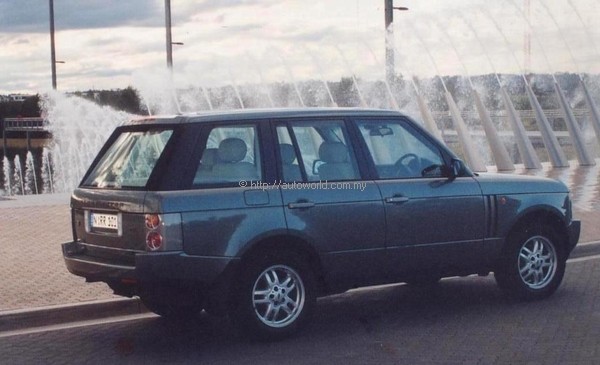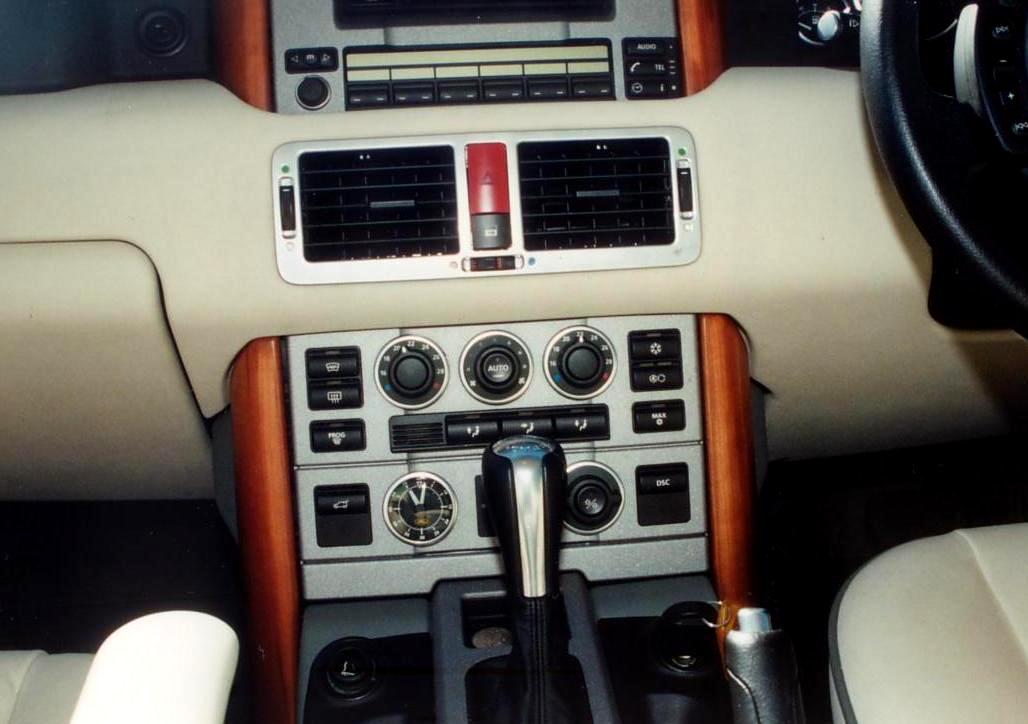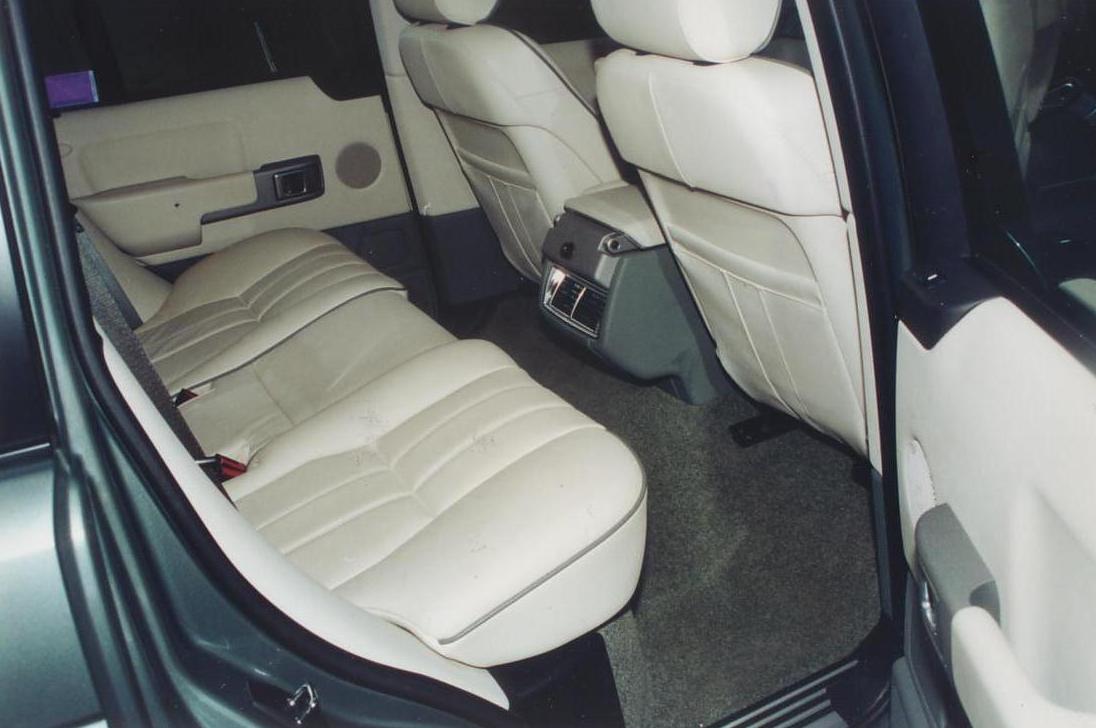Driving Impressions: Range Rover V8
With this report, we introduce PH Cheah, a Malaysian who has been residing in Australia since the mid-1980s. He has been writing for Malaysian auto magazines since the 1970s and his job, which takes him to many countries, enables him to get behind the wheel of many of the latest cars. To start off, he shares his experience with the flagship of the Land Rover range – the Range Rover V8.
The off-road trail isn’t a very difficult one. But I have permission to use it as it is on a private property in South Maruta, something like 60+ kms out of Sydney, Australia. Still, a good mate of mine owns the 97,000 sq. metres of land where he has carved out a trail-bike, 4WD track to allow Anthony, his son and his mates to go around playing in either four or two-wheeled vehicles.
The track itself is undulating , hilly and full of rocks and potholes but it poses no challenge at all to the Range Rover. And why should it be? Today’s Range Rover is better than ever, its off-road prowess has been enhanced while its tarmac abilities now approaches ‘normal’ passenger cars.
The latest Range Rover is a handsome beast; it is large, has a huge presence and has a design that pays more homage to the original. The familiar Range Rover cues are there, the clamshell bonnet, the floating roof and the sheer simplicity that has made the Range Rover a design icon many other manufacturers will kill for. The vents just behind the front wheels are new but there’s no mistaking this large, attractive vehicle as anything but a Range Rover.
That handsome exterior is complemented by a cabin that’s one of the best of any production vehicle, in my opinion. There’s a host of original thinking here from the use of cherry wood (or walnut or aluminium trim) that raises from the floor, up the centre console, is broken up by a bunch of controls and continues to the top of the dashboard.
It is also a far more roomy cabin than before with ample room in front and at the rear. The front seats support well and have more than sufficient adjustments to keep most people happy. They are a little on the large side for good lateral support but finding an ideal driving position is child’s play. And like a child, I spent some time playing with the many electric motors to adjust the seats, memory settings, even the ride height.
Of course you see over most of the traffic, looking over the sculptured bonnet over the roofs of passenger cars, even smaller 4WDs. But Mack trucks and Ford Louisville monsters still tower over the Range Rover.
It is beautifully executed and built to a standard previous Range Rovers could only aspire to. Thank BMW for the integrity of the build and the quality of the materials used and then, thankfully Ford allowed the RR to go into production in this guise and let’s hope the finance people in Dearborn will allow future Range Rovers, other Land Rover and PAG (Premier Automotive Group) products to be built to such high standards.
Power comes from a BMW-sourced V8 that’s as modern as the previous V8 was ancient. There are no less than 32 valves and a quartet of camshafts and there’s plenty of power although having to haul a 2 tonne+ machine around means acceleration isn’t exactly heart stopping while fuel consumption is. Still, if you are able to afford a A$140,000 plus (close to RM300,000) vehicle, fuel cost will be the least of your problems.
The 4398 cc V8 produces 210 kW (282 bhp) at 5400rpm with 440 Nm of torque at 3600 rpm. Enough, says Land Rover, to move the beast from rest to 100 km/h in 9.2 seconds to a top speed – purely academic, of course – of 208 km/h. But even if acceleration (on paper) isn’t impressive, it’s different behind the wheel. Power goes through a well mannered 5-speed auto that changes smoothly between gears. There is ample power if you want to push pedal to floor and really push it but the delivery is smooth and relatively quiet.
The transmission is an electronic dual mode with Steptronic selection while the 4WD uses a 2-speed chain drive transfer box with Torsen centre differential to distribute torque efficiently to all four wheels
Aside from the stiff body with effective crumple zones, the safety gear includes six air bags that provide front, side thorax and head protection. Emergency Brake Assist (EBA) and Electronic Brakeforce Distribution (EBD), and Dynamic Stability Control (DSC) are fitted to complement the powerful 4-disc ABS.
The engine revs quite willingly and is refined, hushed at moderate to high speeds although those eight cylinders do make themselves heard during hard acceleration. However, with a gearbox that almost slurs between changes and its refined demeanour, the Range Rover feels more luxury car than ‘mere’ 4WD.
For sure, the new model is far less truck-like than any previous generation (not that there have been many). There’s an all-new monocoque chassis for one and the four wheels are independently suspended. Wheel travel is still mightily impressive and the ride is uncommonly smooth – it simply glides over whatever Sydney’s paved roads can throw up, the heavy body no doubt helping to defeat the bumps, ripples, potholes and speed humps without too much effort.
Air suspension is used at both ends, the front has cross linked electronic air suspension with MacPherson air struts while the rear uses the same cross-linked system with double wishbones.
The softish ride does not help body roll though and while the car corners far better than any tall, high ground clearance vehicle has a right to, there’s still more body roll than I am used to. Having said that, the Range Rover still corners with some precision. The steering feels over assisted, is a little slow and there’s not enough feel on the straight ahead but this is much better in its overall feel than the previous model.
So here I am, driving in one of the best-looking cabins in production and looking to ‘play’ on a good friend’s private property, and you can bet that the flagship Land Rover took to the off-road terrain like a duck to water. Nothing was too hard… it almost managed to climb up a rock just to get a great picture.
The off-road ride is outstanding and while I did select LOW range manually and use the Hill Descent Control which Land Rover developed, there was never any need to raise the car’s normal ride height. Its ability to transverse everything along that trail made me seek something far more difficult but alas, anyone thinking of taking on some very serious off-roading should never do so without back up, Range Rover or not. Even the best and most capable vehicle can get stuck…
But, within reason, I am certain that the world’s best luxury 4WD is able to handle anything the earth’s more unhospitable terrain can throw up. And it will leave a silly grin on the face of the driver.
And when the need arises, the Range Rover is more than able to keep company with the rest of the luxury car field simply because of its sophisticated design, luxury cabin and amenities but mostly because it is a Range Rover, probably the most recognised and admired vehicle of this class in production.








































